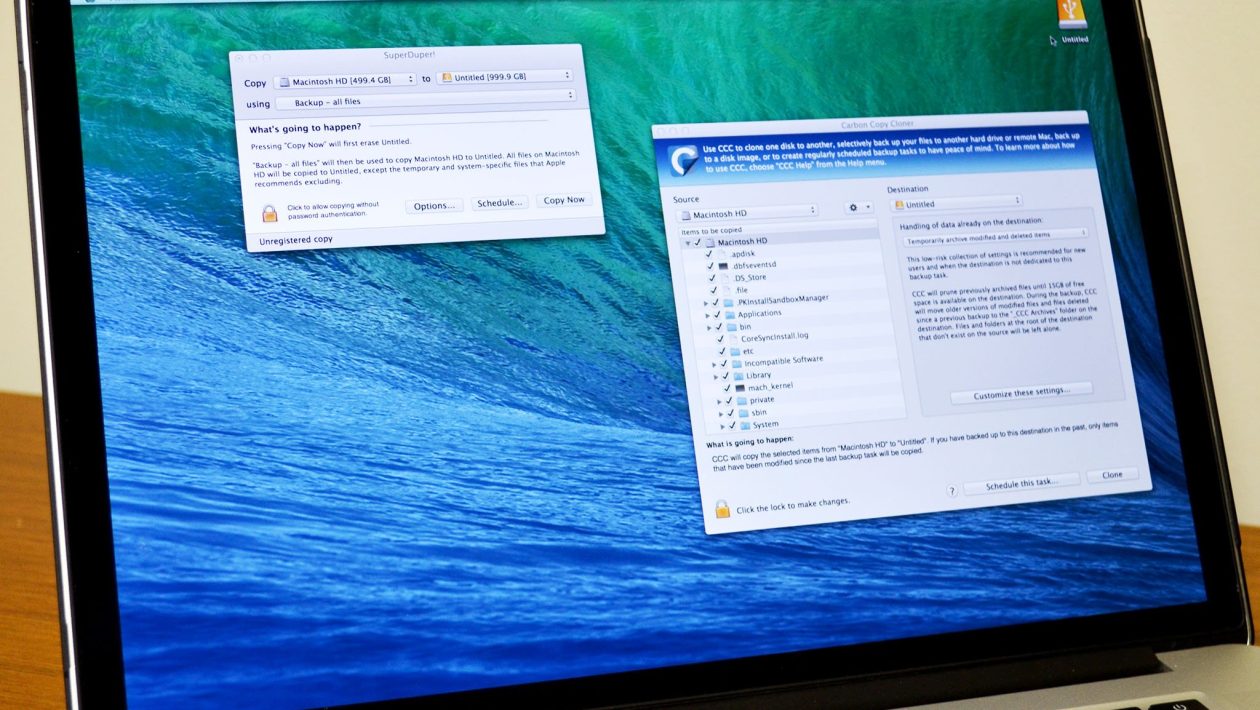If you have important files on your Mac, which you most likely do, the best thing to do is back them up. Backing up your files ensures you don’t lose them completely should anything happen to your system.
Also, when there are file backups on your Mac, you can create secondary-level access to your personal files. These, among others, are some of the benefits of backing up your file on Mac.
There are software applications you can download to back up your file on your Mac. However, Apple offers some file backup solutions that you can initiate with only a few clicks. You can use either of these methods to back up your Mac files. Below are five effective methods for backing up your files on Mac and ensuring your access remains.
Table of Contents
Method 1: Time Machine
The easiest way to back up your files on Mac is by using Time Machine. To do this, you will need an external storage device, especially if you are using a recent version of macOS.
Once activated, Time Machine backs up files saved within the last twenty-four hours every hour, including those used to play cricket when you click here. It will also give you daily backups for the past month as well as weekly backups for other months.
To back up using Time Machine:
- Go to the menu or through the System Preferences dropdown to open your Time Machine preferences; then, select “Backup Disk.”
- From the list of connected media, choose the external drive(s); if there is only one, you will see only one.
- For additional file security, click the box next to “Encrypt Backups” and then click on “Use Disk” to finish the backup.
Method 2: Bootable Backup
The next method is creating a bootable backup, which is necessary if your Mac’s startup process gets corrupted. In this case, the system will start freezing, locking you out; you will need a bootable backup disk to regain access.
Your files will be safe if you have a cloned copy of your hard drive on an external drive. However, you need to have this copy before your Mac’s startup processes start acting up for this to work.
First, get a cloned backup on the external storage; then, plug it into your Mac. Once you have plugged the external drive in, press the power button to boot the Mac.
Keep your finger on the option key while the system comes on, after which you will choose the external drive when prompted. This method gives you a direct booting experience with your local files, and it doesn’t take long.
Method 3: External Storage
One of the most common ways to back up Mac files is by using external storage. Depending on the size of the external hard drive, you can store all your files and there will be space for more.
Consider investing in a large-storage external drive, like 2 terabytes; it is expensive, but it is worth it. You will be making a long-term investment this way, and there is no need to pay any monthly subscription.
Backing up files using external storage has its perks; first, your files are kept local, meaning you don’t need the internet to access them. Also, you can use as many external hard drives to store as many files as you need.
Method 4: Use Third-Party Software
You can get backup solutions, retrieval solutions as well as additional Mac information support from third-party software applications. Disk Drill is the best option if you want to use this method to back up your Mac.
That is because Disk Drill’s comprehensive software suite gives you control over every possible issue you may encounter on your computer. Also, the software is fast in backing up files, offers an intuitive interface, and has cross-platform support with reliable performance.
There are other third-party software providers you can try apart from Disk Drill. These include Acronis Cyber Backup, Arcserve UDP, and Veeam Backup and Replication. The upsides of using this method include rapid Mac backup solutions, off-site storage and file management, and access to additional Mac support.
Method 5: Cloud-Based Services
The last method on this least for Mac backup solutions is cloud-based services; these function as off-site external drives. They are very secure, ensuring that nothing happens to your files should any local catastrophe occur.
Simply purchase the amount of cloud-based storage you need and then copy and paste your files into it. Then, if you lose your files, you can restore them from the cloud backup solution.
iCloud is the most popular cloud-based backup service for Mac users; it is easy to use with the latest macOS. Also, you will not have problems using this solution if you are signed in with the same Apple ID as your Mac.
To get started with using this method, turn on iCloud Drive on your Mac. Then, drag and drop or copy and paste files from your Mac to iCloud. Other cloud-based services you can use include Google Drive, iCloud, Dropbox, iDrive, and Amazon Drive.
Conclusion
Knowing how to and backing up your files while your Mac is still doing fine is the best option. It will save you from headaches when your Mac suddenly develops faults or starts misbehaving so to say.





